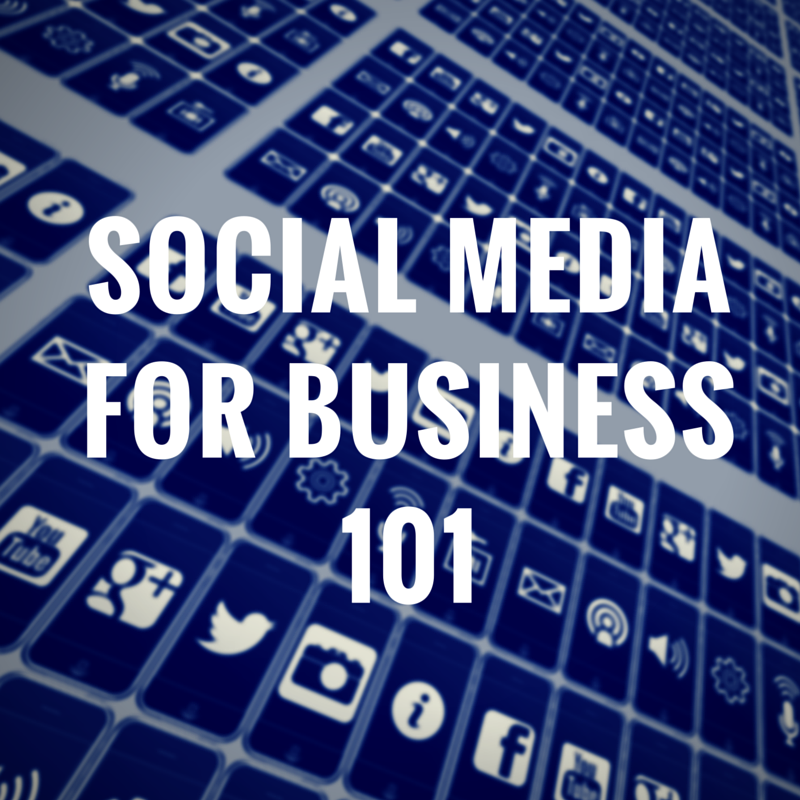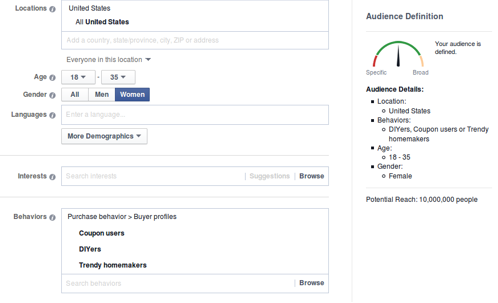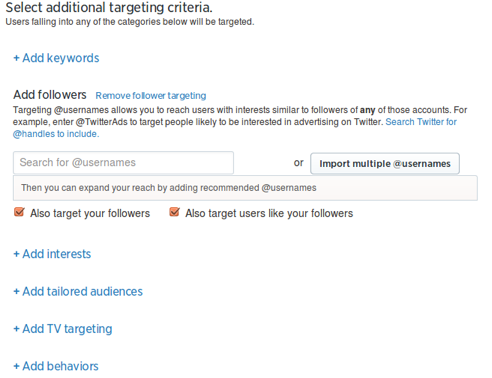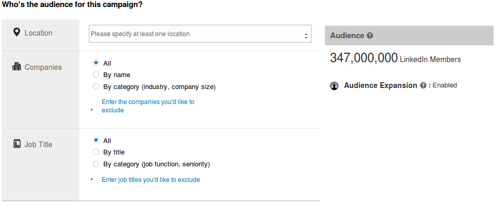 Why is social media important for businesses?
Why is social media important for businesses?
A comprehensive social media strategy is imperative to business success in a digital world. 93% of marketers are using social media for business – are you part of the 7% that doesn’t?
Social media is more than simply making posts on Facebook and responding to customers on Twitter. A strong social media presence is a critical part of the purchase decision making process. 74% of consumers rely on social media to inform their purchasing decisions, with 47% of Americans saying that Facebook is their top influencer of purchases.
If you don’t have an active social presence that both engages and informs users, you are losing customers to competitors that do.
Benefits of social media
A social media campaign is about more than just posting updates and promoting sales. A well-rounded social media program will involve the following:
- Monitoring the social space for mentions of your brand to prevent reputation issues from taking shape.
- Responding to customer service inquiries and product questions to ensure a positive experience with your business.
- Marketing your existing content to bring more traffic to your site.
- Tracking clicks and conversions on your site as a result of social advertising.
- Creating meaningful one-on-one relationships with customers that will lead to return purchases or recommendations to their peers.
Best practices for businesses
Whatever social networks you decide to be active on for your business, there are some best practices you should follow to achieve social success.
Post at the proper frequency
Make sure you are posting enough that customers are up-to-date on your products and services, but not so much that they feel as though they’re being bombarded with updates.
The frequency you should post greatly varies by your industry and audience, but these are general posting suggestions:
- Facebook: at least twice per week, not to exceed once per day
- Twitter: at least once per day, with tweets spaced out at least an hour apart
- Google+: at least once per week, not to exceed once per day
- LinkedIn: at least once per week, not to exceed once per day
Follow the 80/20 rule of posting
You may be tempted to fill your social networks with news about sales, specials, and promotions. Fight that temptation. Users are far less likely to interact with brands if they feel like they’re actively being “marketed” to.
Instead, follow the 80/20 rule – 80% of what you post should be engaging (questions, photos, articles from third parties), while the remaining 20% should be about your company, products, or services.
Invest in a social media dashboard
You’re busy, we get it. Good social media takes time and effort, but a social media manager will help you use your time wisely.
Tools like HootSuite, Sprout Social, and Buffer allow you to schedule posts, measure engagement, and monitor social chatter about your business.
Pay attention to what’s going on in your industry, as well as the world
Being in tune with your audience’s interest will help you engage with them and will build a strong customer relationship.
Monitor industry publications, competitor social media accounts, and popular blogs to stay aware of what’s important to your customers.
Likewise, pay attention to what’s going on in the world. Do not jump on a trending hashtag without first identifying what it means. That goes for scheduled posts, as well – an innocuous tweet posted at the exact wrong time could result in a social media disaster.
Further reading:
What social networks should I be on?
There are hundreds of social media sites out there, and obviously your business does not need to be on all of them. The first step is identifying which social networks will be the most beneficial for your business.
A few important things to note before you begin creating your social media profiles:
- Keep your username/handle consistent. Deviating from your set username can confuse your customers and make it more difficult for them to find you. Use a tool like CheckUserNames to see if your chosen username is available on the social networks you plan on using.
- Only focus on social networks where your customers are. There are a lot of social media sites out there, and it would be a waste of your time to try to be active on all of them, especially if your target audience doesn’t spend time there.
- Put the URLs to your social profiles everywhere: your website, your email signature, your promotional materials. The best way for people to find you is organically; don’t make it harder than it needs to be to find you.
Major Social Networks
- Facebook: The obvious choice. 71% of online adults are on Facebook, which makes this the first step when setting up your business’s social profiles. In the digital world, if you don’t have a Facebook page, your business doesn’t exist.
- Twitter: With over 280 million monthly active users, Twitter is another popular choice for businesses. Due to the conversational nature of Twitter, this is a very popular platform for addressing customer service concerns and connecting with your users.
- LinkedIn: LinkedIn is the prime social network for B2B companies looking to reach other businesses and professionals in their field. LinkedIn boasts a membership of 345 million users worldwide, including 7.9 million business decision makers and 4.2 million corporate executives, making it the perfect platform to connect with other business professionals.
Secondary Social Networks
These social networks may not have the commonality or large user base of the ones listed above, but they are still worth having a presence if it makes sense for your business:
Local Social Networks
If you are a local business – meaning, a business with a storefront that caters to a particular area or region – there are a number of local social networks that can increase your visibility in search engines and help customers find you:
Niche Social Networks
Aside from the popular social networks, you may find that there are niche social media communities that make sense for your business to be active on (for instance, Birdpost for bird watchers and Ravelry for knitters).
While they may not have the audience size of Facebook, these niche social networks likely have a much more targeted demographic for your business to interact with.
Using social as a customer service channel
Social networks have become a prime channel through which customers solicit customer service. 35% of consumers have asked a customer service question via social media, and 53% of users expect to hear back from the brand they’re interacting with within one hour. Businesses can simply not afford to ignore customer service requests on social media.
These tips will help you keep your customers happy as well as protect your brand’s reputation.
- Respond quickly. In a study, 38% of users said they felt more negatively about a company if they didn’t receive a timely response. Try to respond to all customer inquiries within one hour. If you can’t fully answer a customer’s question, at least let them know you are working on finding them a solution so they are not left in the dark.
- Listen to your customers. They may be using social media to voice their complaints or praise your products. Either way, they can provide valuable insight into your company’s strengths and shortcomings, and allow you to improve your business based on their feedback.
- Always respond professionally. Whether the customer is right or wrong, remember that social media is public and what you say will reflect on your company.
- Respond to positive comments. If a customer is taking time out of their day to praise your business, thank them for their patronage. If they repeatedly wax poetic about their great experience, give them a coupon. This is how brand ambassadors are built.
Crisis management
Answering questions and thanking customers for their patronage is easy, but what happens when someone slams your company? Whether it’s true or not, once it’s posted, there are a host of issues you have to consider:
- Is this comment going to harm my company’s reputation?
- How can I help this customer?
- If the complaint is true, what can I do to prevent this from happening again?
- Never delete negative comments (unless these are obvious spam comments)
Be timely
53% of Twitter users expect to hear back from the company they’re interacting with within an hour. That doesn’t give you a lot of time to plan a response, so consider creating an action plan for responding to customer inquiries.
Create an action plan
You need to develop a strategy for dealing with negativity. Since customers will be counting down the minutes until your response, take the time to nail down your strategy now so you’re able to nip problems in the bud as they happen.
Own up
If you did something wrong, acknowledge it and apologize. Radio silence – or worse, denial – will alienate customers and often drags the problem on much longer than if it was addressed head on.
Don’t feed the trolls
Sometimes, people are just mean and there’s no way to make them happy. If you attempt to remedy a situation with a customer and they are rude, hateful, or continue flaming your company, it’s time to move on.
At the very least, request that they email or call you to continue the conversation so that it’s not publicly plastered all over your social accounts.
Learn from other companies
Unsurprisingly, social media crises are handled inappropriately all the time. Reading case studies about companies that have mishandled or successfully handled a social disaster can help you build your own strategy.
Social Advertising
Most social networks offer some sort of paid promotion or advertising features to help get a brand’s social media account or posts in front of more eyes. While companies can rely on organic reach and word-of-month for increased exposure, paid promotion can ensure wide reach and help drive more traffic and leads in a measurable way.
Facebook ads are the most common and prolific social media ads due to their ease of use, hyper-targeting functionalities, and price. They are becoming even more popular as Facebook slowly drives brand updates out of users’ News Feeds in attempts to show what it deems more relevant content.
Facebook’s self-service ad platform offers a variety of products that can help:
- increase Facebook page likes
- attract more likes, comments, and shares on your posts
- drive traffic to your website
- promote mobile app downloads
- track conversions made on your website as a result of social advertising
Ads can be targeted broadly to a particular geographic area or industry, as well as more granulated demographics including specific interests, hobbies, and online purchase behaviors. Businesses can also create a Custom Audience using phone numbers or email addresses to help reach customers you already know.

Twitter has a similarly easy-to-navigate self-service platform and provides a robust analytics section to measure the effectiveness of ads.
Twitter’s product offerings can help both businesses and individuals:
- reach more users and drive conversions
- send more users to your site with unique call-to-actions
- get users to download a mobile app
- collect emails from people who express interest
- gain more Twitter followers
Much like Facebook, targeting on Twitter ads is very precise. Users can be targeted by their geographic location and interests as well as by similar accounts that they follow.

LinkedIn’s self-service ads are fairly limited, with the more robust products offered only to marketers with a sales rep at the company. Regardless, businesses can use the self-serve ad to put content – and existing posts – in front of the right audiences.

Because LinkedIn caters to professionals, there are a variety of handy targeting options including job title, industry, and company size.

Recommended Tools
We love tools here at Internet Marketing Ninjas, and we’d be remiss not to share some of our favorite social media tools.
Promotion
Measurement and Insights
Read further: 6 Social Media Analytics Companies To Keep An Eye On
Monitoring
Read further: Start Monitoring Your Online Reviews Now: No Excuse for Ignoring Online Reputation! #JimAndAnn
Relationship Building
More IMN 101 Guides
Don’t miss more 101 marketing guides from Internet Marketing Ninjas: